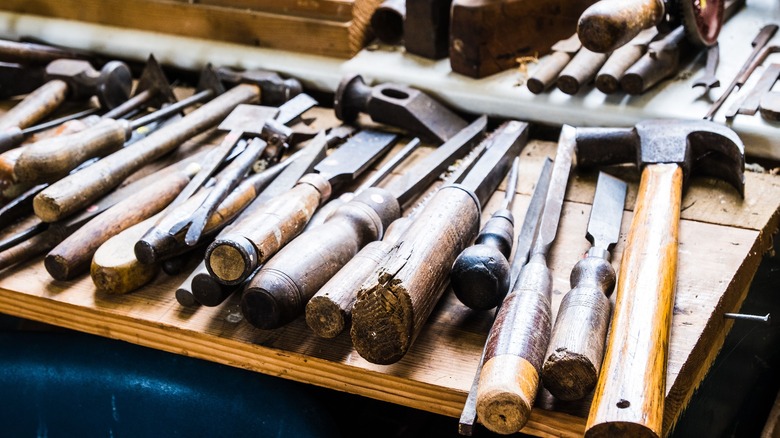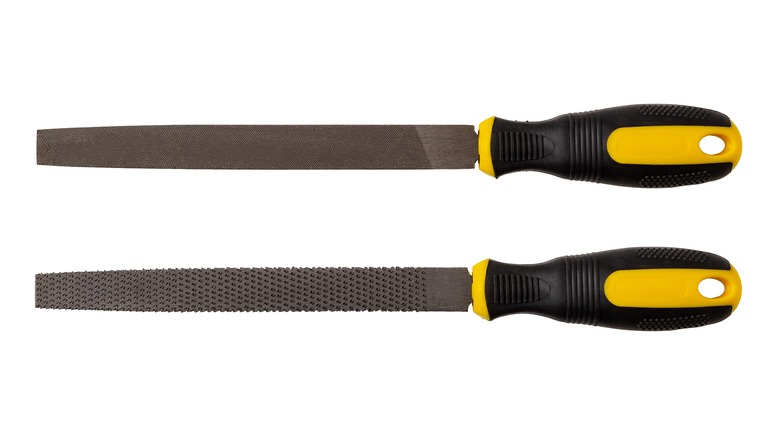What Is The Difference Between A File And A Rasp Tool?
There are certain essential tools every homeowner should have, whatever their experience level. However, as a homeowner gets more into DIY woodworking and researching the many tools worth investing in to start woodworking at home, a wood file and rasp may not even initially be on their radar. These two tools are less common, but still very useful when it comes to shaping curved, contoured, or irregularly-shaped areas. Both types are for sanding, shaping, and removing wood. But what exactly is the difference between the two?
Rasps are used first for course shaping with their larger teeth, while files are used afterward to get a finer sand. As you move from woodworking projects even beginners can do to more complex projects with curved or irregular surfaces, these hand tools are a cost-effective alternative to sandpaper. Similar to the various grits of sandpaper, wood files and rasps have a range of coarseness that perform increasing levels of rough to fine detail as you advance through the project. Knowing the difference between them and which order to use them will allow you to best utilize your wood files and rasps properly.
Wood rasp versus file
Wood rasps are made with individual triangular-shaped raised teeth that are designed to be used before a wood file to remove large amounts of wood and get the wood roughly shaped. Rasps will leave the wood feeling coarse and unfinished, but can make more substantial progress with wood removal than a file. Depending on the size and placement of the teeth, rasps vary in how much wood they will remove and can be used from coarsest to finest in order to fine-tune shaping before picking up your file.
Wood files have low, tightly-spaced rows of teeth for creating a smoother surface. Files are used for the fine detail after a rasp has done the majority of the legwork. A file will give you a smooth surface similar to sandpaper and comes in flat, half-round, and round shapes based on the needs of your project. Files have options with single rows of teeth or double crossed sets of teeth, and similar to rasps, they have varying degrees of coarseness that can be used in order to get a finer sand. By working your way from coarse rasp to fine file with care and attention, you can successfully shape and sand your woodworking project using your traditional hand tools and some elbow grease.


